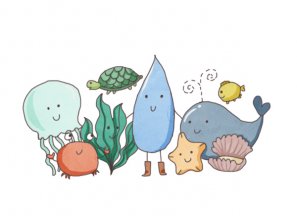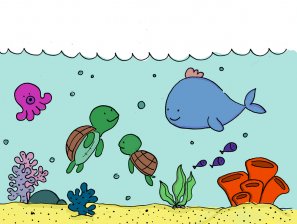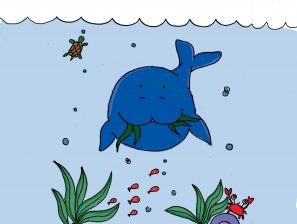Marine Creatures
The great blue ocean is home to numerous marine creatures, from miniscule algae to the largest animal on Earth - the blue whale. Let’s take a look at the various creatures in the ocean!
1. How many marine creatures are there?
Marine creatures are animals, plants, bacteria, viruses in extremely diverse forms living in the ocean world. Most scientists agree that life begun in the ocean about 3 billion years ago. A recent groundbreaking study in 2012 revealed that there are about 700,000 to 1 million sea creatures, ⅓ of which are believed by scientists to be undiscovered and have the possibility to be discovered within this century.[1]
2. Where do they live?
Marine creatures come in all shapes, sizes and colors; they live in different environments in the vast ocean. Imagine the ocean as a cake: creatures are distributed among the 5 different layers, depending on the light, temperature and depth of these “layers”.[2] No matter where we look in the ocean, we will always find life.
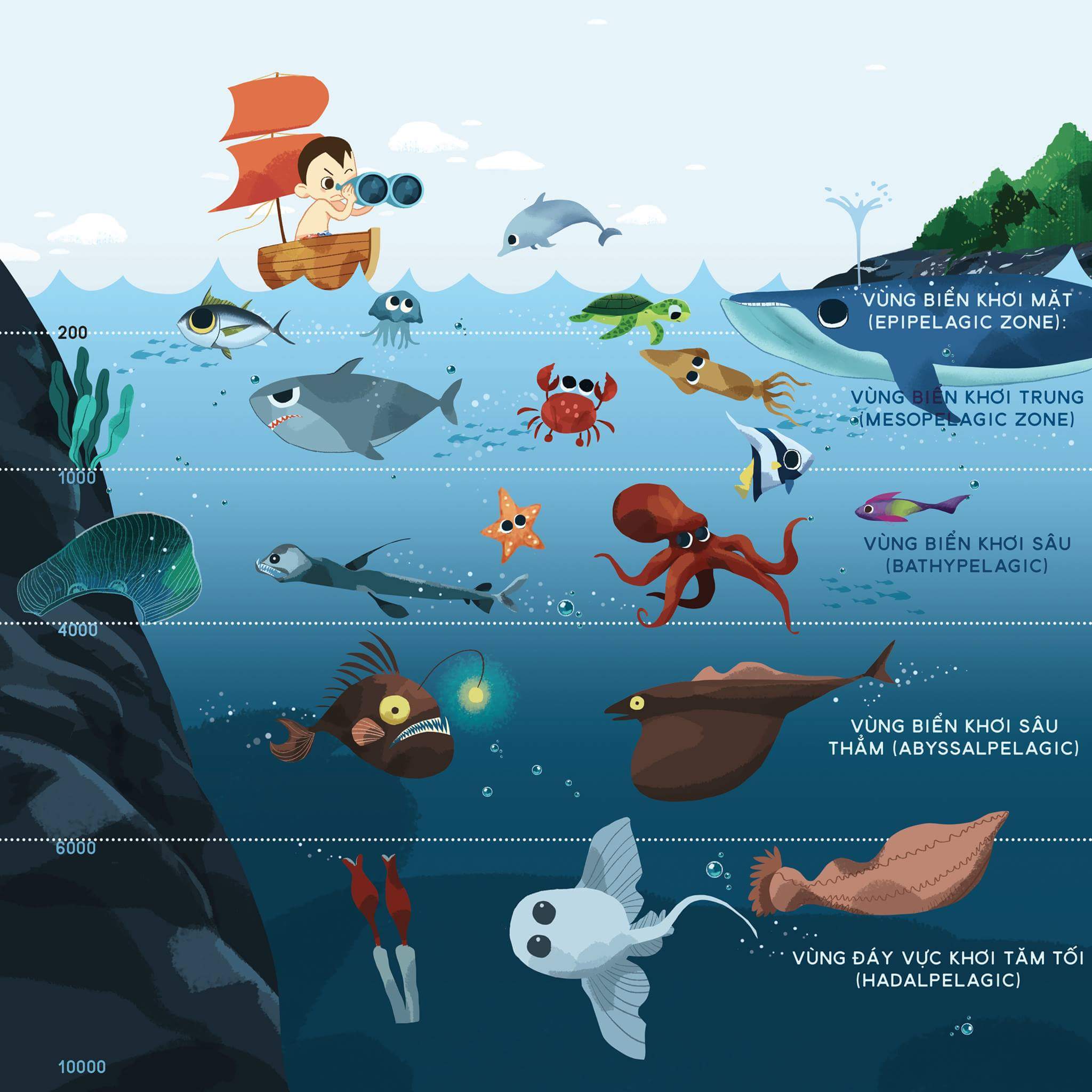
- Epipelagic: 0 - 200m deep. This layer receives the most light and heat, which is beneficial for the photosynthesis process of plants such as algae, planktons, seagrass, and its temperature, is seasonal. Many animals also live here, such as sea turtles, manatees, jellyfish, dolphins, tunas, whales… Most fish that live here are preys or predators, with long and round bodies, wide mouths, smooth skin, and forked tails. This is the layer of the ocean with the highest biological diversity.
- Mesopelagic: 200 - 1000m deep. This layer receives little sunlight. It is colder than the epilagic layer. Animals that live here are mostly crustaceans with a lot of muscles, such as shrimps, crabs,
- Bathypelagic: 1000 - 4000m deep. This layer is perpetually in darkness, with cold temperature and few animals. Most animals living here have low metabolism due to the lack of nutrition, thin skin, few muscles, and slippery bodies. Typical animals found here are: squids, starfish, octopi, viperfish, Because of the lack of light, these animals have small eyes or no eyes, and cannot see their preys. Therefore, they adapt by developing wide mouths and long teeth, such as the gulper. They move slowly and have strong gills to filter oxygen from the water.
- Abyssalpelagic: 4000 – 6000m deep. The temperature here is bellow 2 degree Celsius. The water is high in salt content and pressure. Still, life exists here, in the form of sea worms and sea urchins. Many of them are bioluminescent.
- Jadalpelagic: 6000-10000m deep. The deepest, darkest and coldest place in the ocean. Very few creatures live here, such as sea cucumbers, sea spiders, sea sponges.
3. What do they eat?
Just as creatures on land, marine creatures are linked together with a food chain, in which the previous creature is food for the one after it. Each creature is considered a link in the food chain. In most cases, each creature is both a consumer (one that eats the previous creature), and food (eaten by the next creature). More specifically, a food chain has:[3]
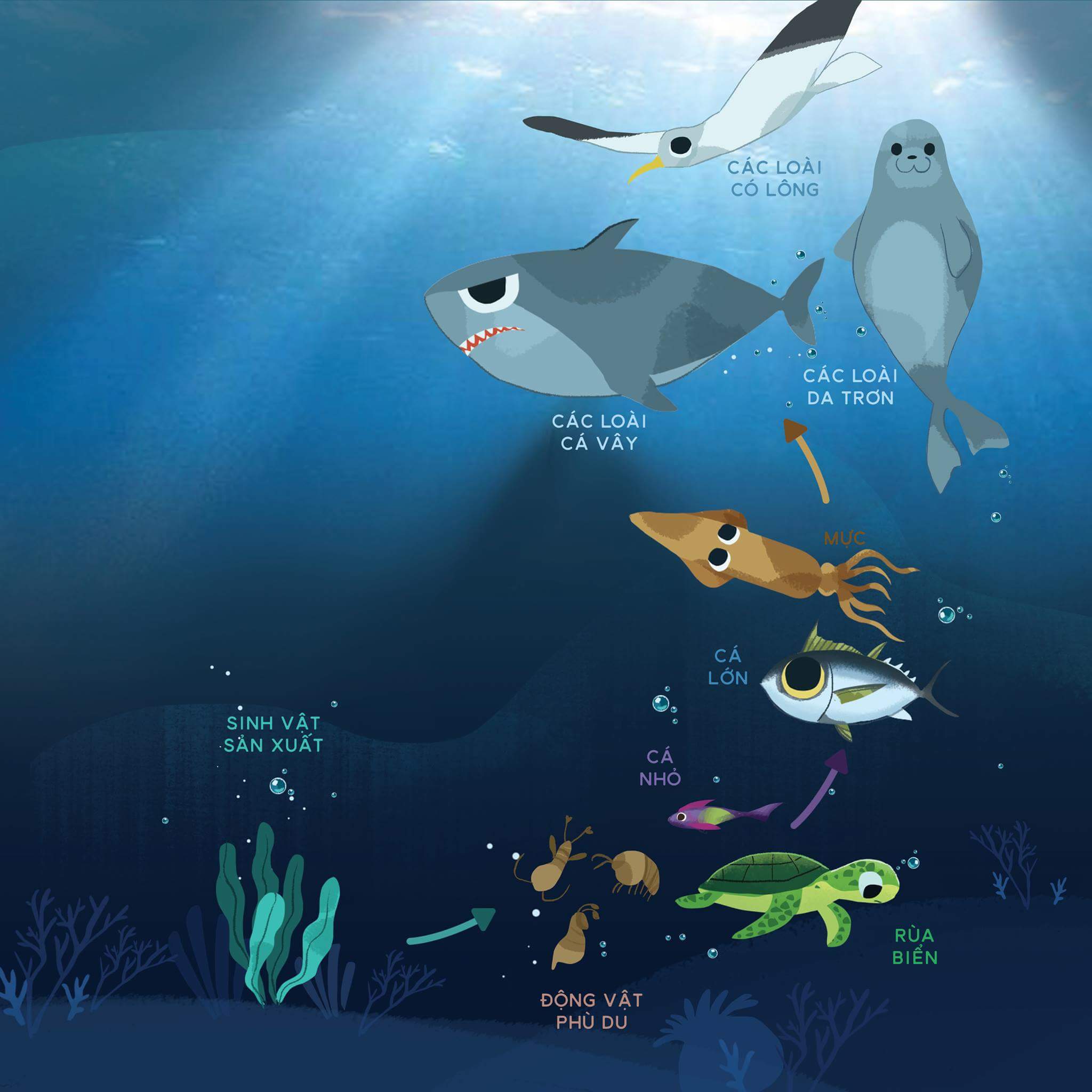
Heterotrophs are creatures that create organic materials from inorganic materials. They use solar energy or chemical energy to produce organic materials. They consist of planktons, seagreass, seaweed; Heterotrophs are considered the starting point of a food chain.
Consumers are creatures that cannot produce organic materials and instead depend on others. They include:
- Primary consumers are those that consumer plants. They consist of zooplanktons, crab larvae, molluscs, fish, to bigger species like green turtles.
- Secondary consumers are carnivorous and consume primary consumers. They consist of big animals such as squids and fish. They eat small primary consumers like small fish, molluscs and zooplanktons.
- Tertiary consumers and quaternary consumers are those that either consume secondary consumers, or live parasitically on secondary consumers and carrions. They are a diverse group that includes Perciformes (sharks, tunas, and whales), seabirds (penguins, seagulls) and Pinnipeds (seals, sea lions).
Decomposers are bacteria, fungi, from dead creatures.
For example, a simple marine food chain is: Phytoplankton -> Zooplankton -> Small fish -> Mackerel -> Dolphin -> Great Shark
A group of food chain with common links creates a dense food network.
4. Fun facts
- The blue whale is the largest known animal on Earth. A blue whale can weigh up to 200 tons and be 33m in length, which makes it the size of a Boeing 737!
- The sailfish is the biggest and fastest ocean fish. An adult sailfish can weigh 680kg and swim at 88km per hour - equivalent to a car on the highway.
- Many fishes can change their sex. Especially those that live deep under the sea are hermaphroditic, meaning they have both male and female reproductive organs.
- Vietnam has many rare marine creatures. However, many like sea turtles, manatees, have dwindled significantly in number and under the threat of extinction according to the International Red List (IUCN). Let’s learn about these creatures and how to protect them!
